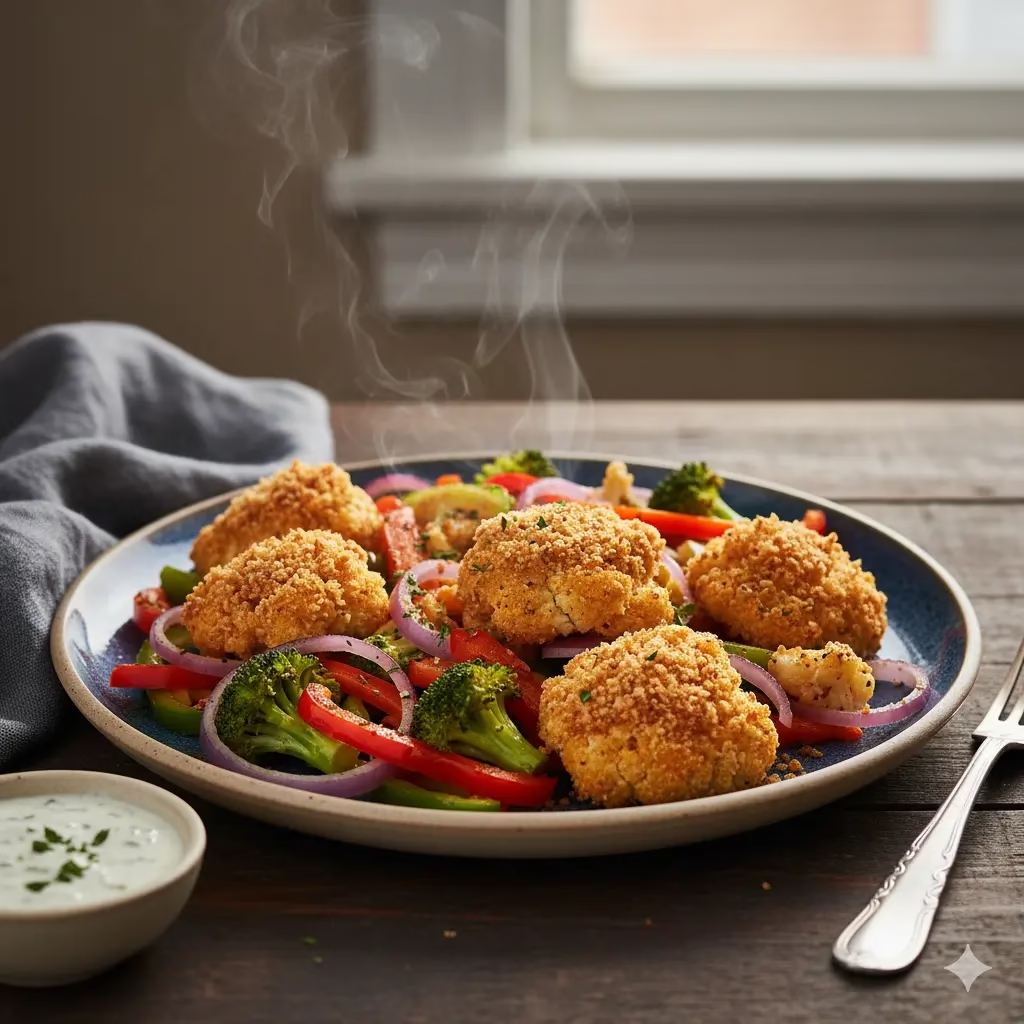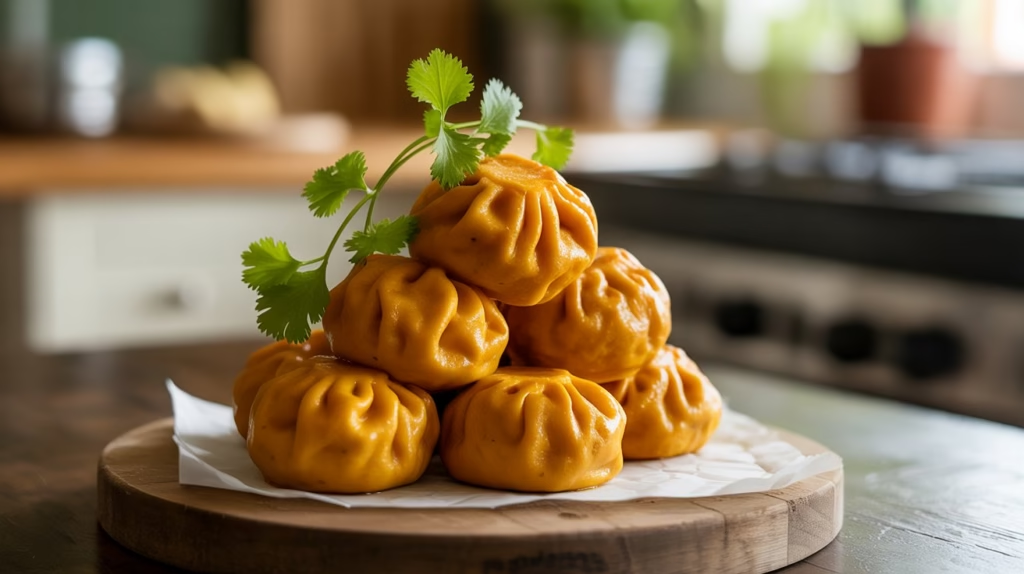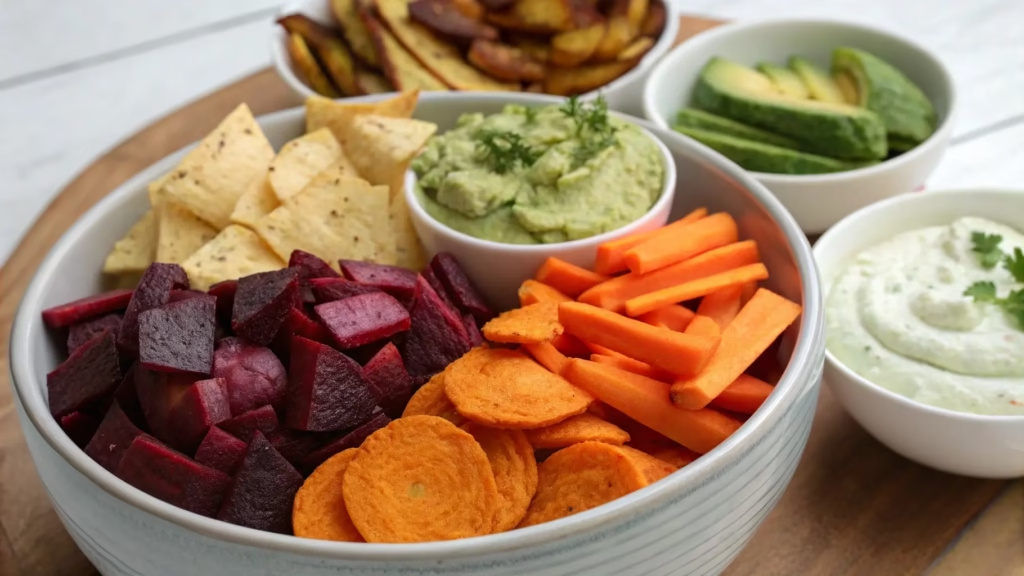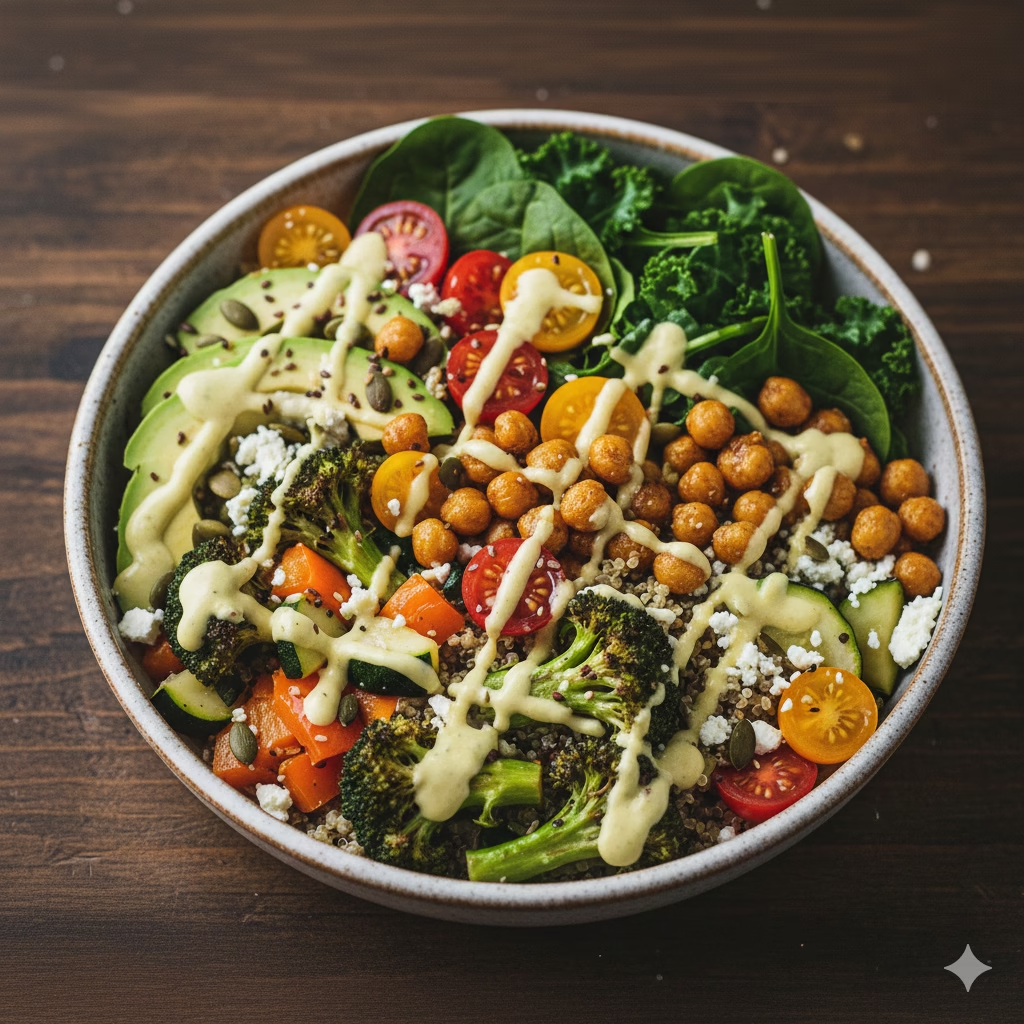
Embark on a journey to a healthier lifestyle, starting with your grocery cart. This guide will help you create a healthy grocery list that makes nutritious eating easy and enjoyable. Discover how simple changes in your shopping habits can lead to significant improvements in your well-being.
Your Path to a Healthier Cart Starts Here
Ever feel lost in the grocery store aisles? It’s a common feeling, especially when you’re trying to eat better. So many choices, so many tempting snacks! It’s easy to get sidetracked and forget the healthy foods you planned to buy. But what if you could shop with a clear plan, making sure every item in your cart helps you feel your best? This article is your guide to building a healthy grocery list that makes eating well super simple.
Eating healthy doesn’t have to be boring or tough. In fact, it can be a fun way to find new flavors and give your body the fuel it needs. The real secret isn’t just what you buy, but how you plan to buy it. A great grocery list is like a map for your shopping trip. It helps you avoid unhealthy impulse buys and makes sure you get all the good stuff, even before you step inside the store.
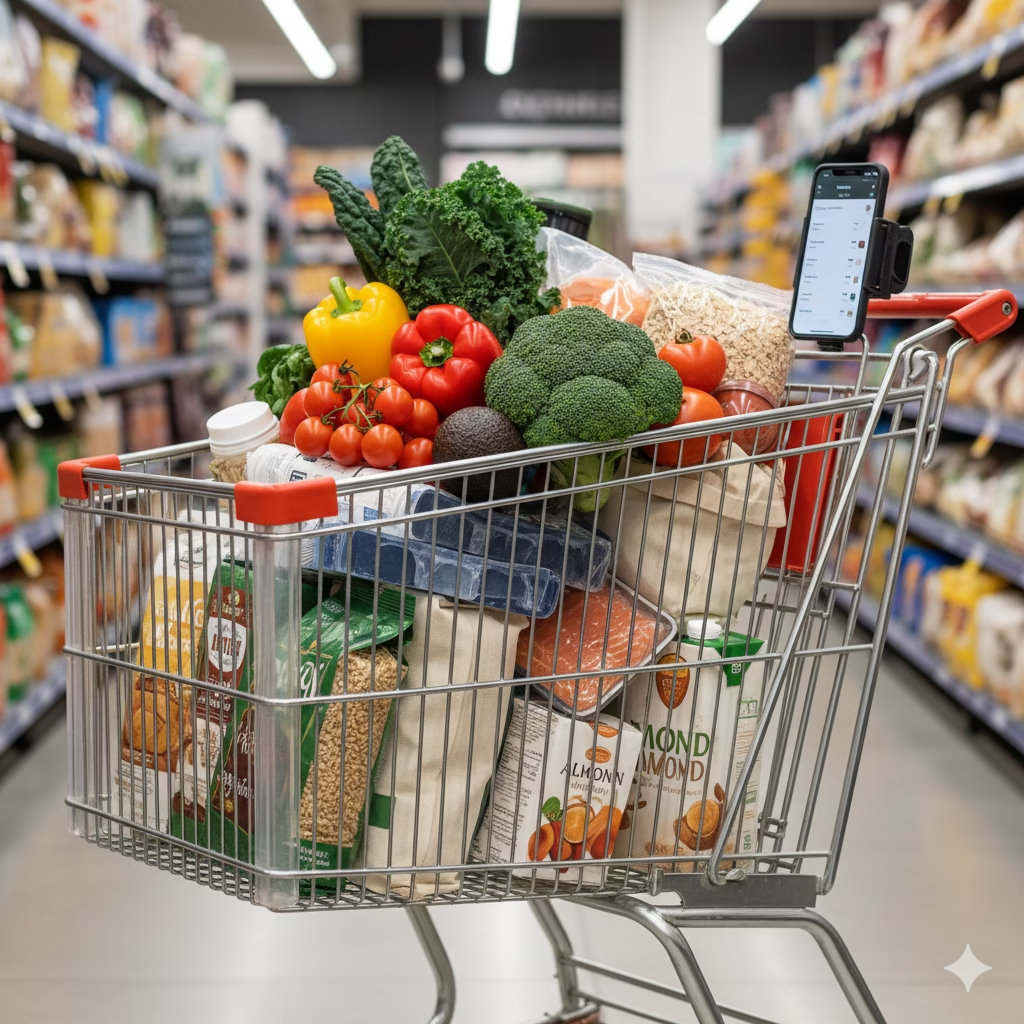
Crafting Your Healthy Grocery List for Success
The first step to a good eating plan is a smart and simple healthy grocery list. It’s more than just a list of items. It’s a plan for your meals, a promise to yourself to be healthy, and a way to save time and money. By planning ahead, you can fill your pantry and fridge with foods that are full of nutrients and support your health goals.
This guide will show you how to make a simple but powerful grocery list. We’ll talk about key food groups, point out important ingredients, and even share a tasty, nutrient-rich recipe to get you started. Get ready to change how you shop and how you feel.
By focusing on whole, unprocessed foods, you’ll naturally eat less unhealthy fats, sugars, and fake ingredients. This guide is for everyone—from people just starting their health journey to those who already eat well but want new ideas. Let’s dive in and make healthy grocery shopping an easy, fun part of your life.
The Ultimate Green Power Bowl
This recipe is a perfect example of a simple, healthy meal. It’s packed with a colorful mix of veggies, lean protein, and good fats. It shows how simple ingredients can make a meal that’s both satisfying and good for you. The best part is how easy it is to change. Feel free to swap things out based on what’s fresh or what you have at home.
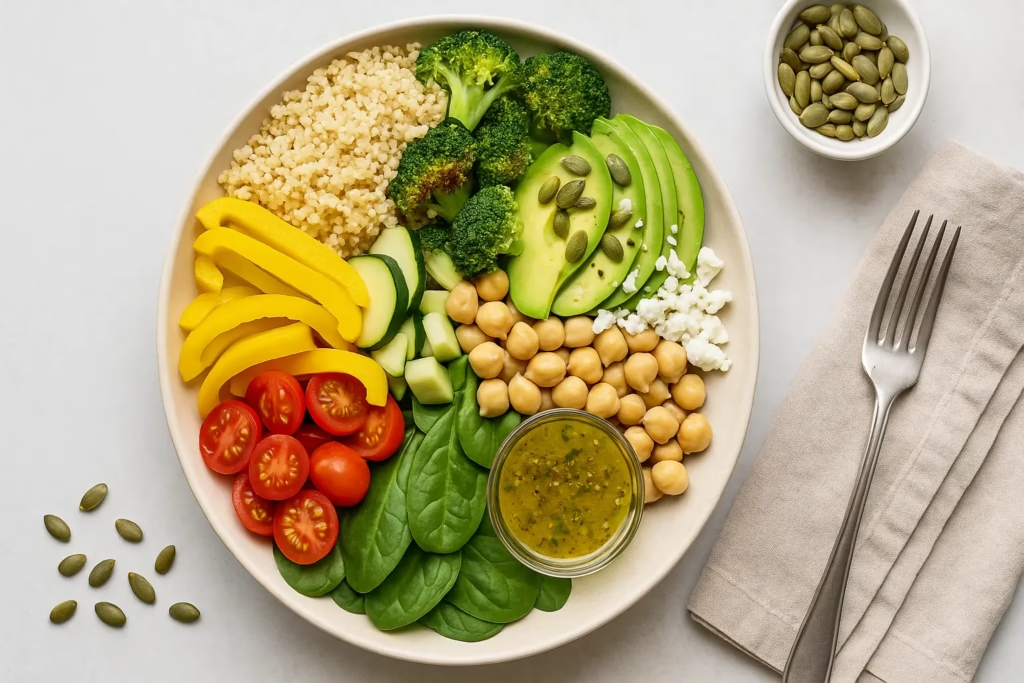
Prep and Cook Times
- Time to Prepare: 15 minutes
- Time to Cook/Blend: 20 minutes
Nutritional Information
(Per Serving, approximate values)
- Calories: 450-500
- Protein: 25-30g
- Fats: 20-25g (mostly healthy unsaturated fats)
- Carbohydrates: 40-50g (complex carbs from vegetables and grains)
- Fiber: 10-15g
- Vitamins & Minerals: Rich in Vitamin A, Vitamin C, Vitamin K, Folate, Iron, and Potassium.
Essential Equipment for Your Kitchen
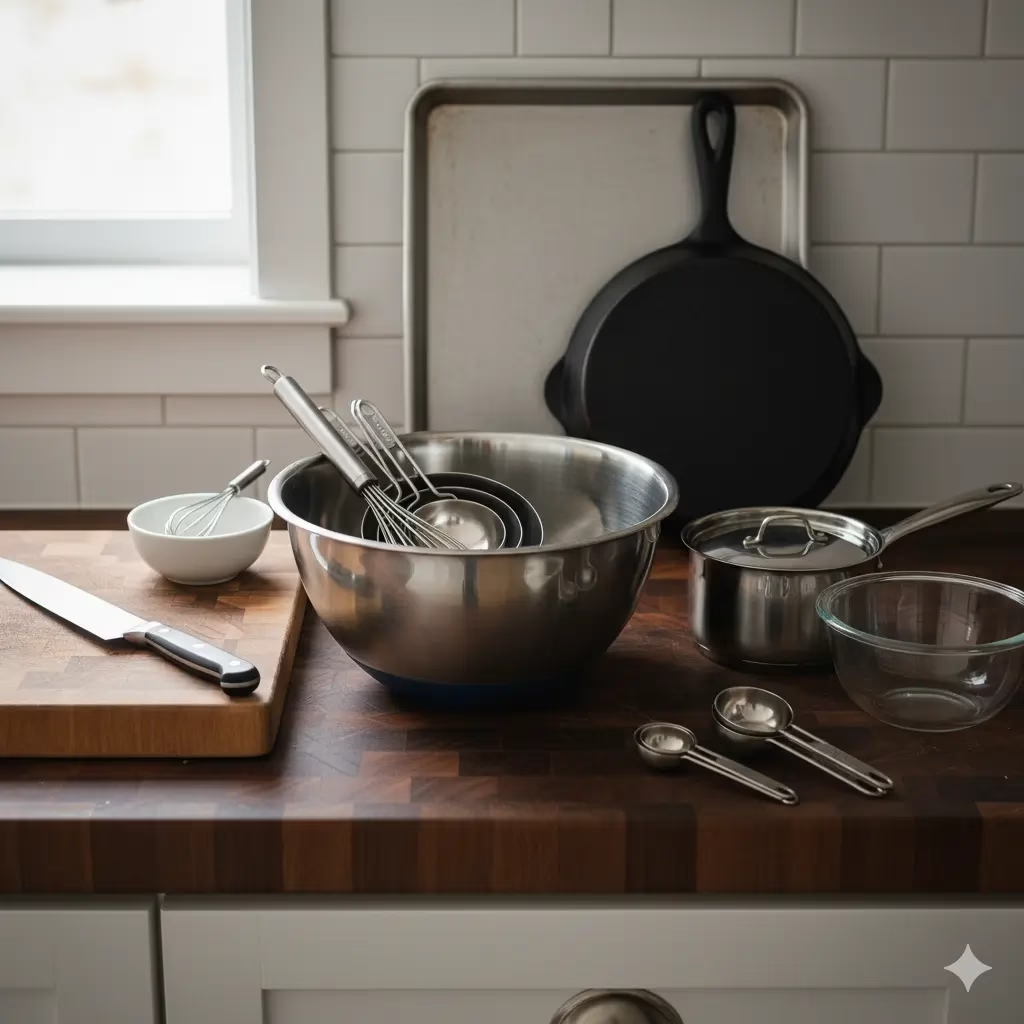
To make the Green Power Bowl, you’ll need these basic tools:
- A large bowl for mixing
- A sharp kitchen knife
- A cutting board
- Measuring cups and spoons
- A small pot or microwave-safe bowl (for cooking quinoa/dressing)
- A large frying pan or baking sheet (for cooking veggies)
- A whisk or a fork
- Serving bowls
Ingredients from Your Healthy Grocery List
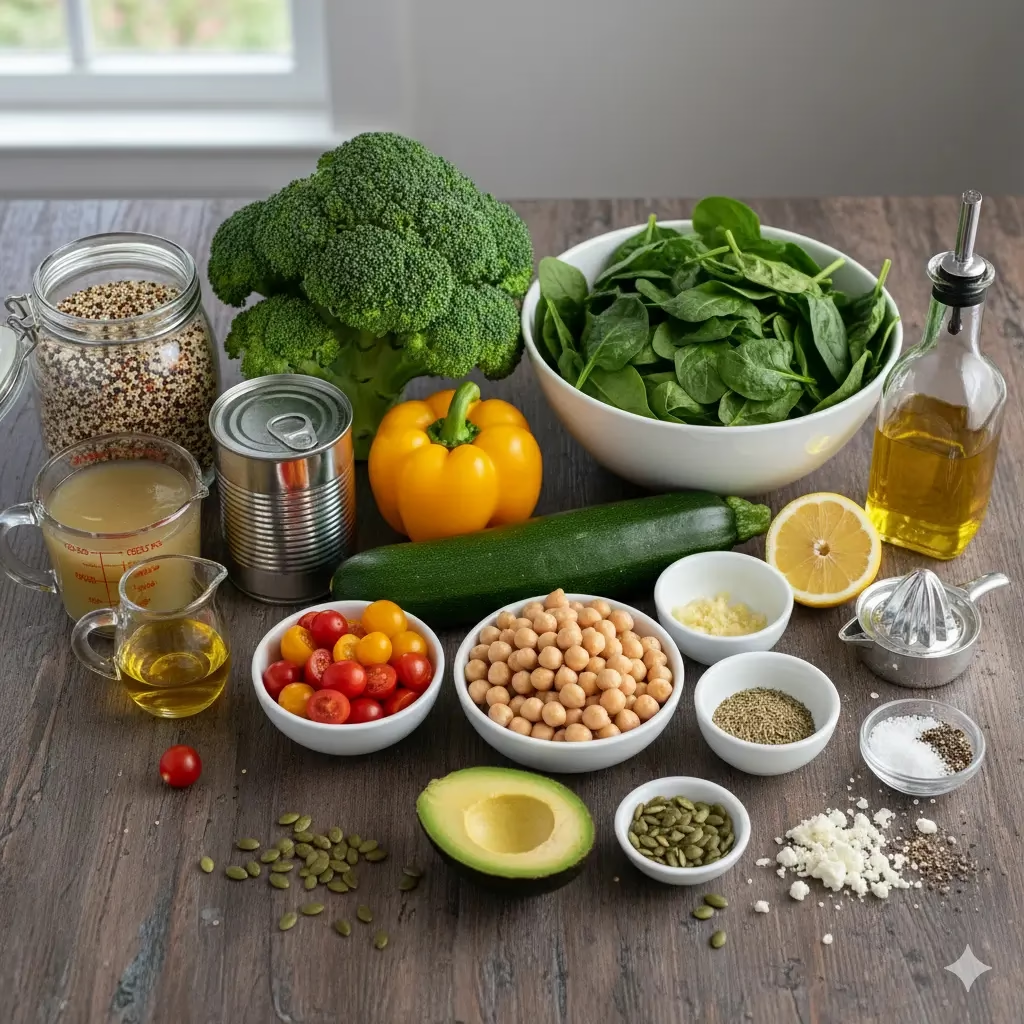
Before you start, make sure you have these healthy ingredients:
- 1 cup of dry quinoa (a great protein and fiber source)
- 2 cups of water or vegetable broth
- 2 tablespoons of olive oil, split
- 1 big head of broccoli, cut into small pieces (full of Vitamin C and K)
- 1 bell pepper (any color), sliced (an excellent source of Vitamin C)
- A large zucchini, sliced or cut into cubes (low in calories, high in water)
- 1 cup of cherry tomatoes, cut in half (full of antioxidants)
- 1 can (15 ounces) of chickpeas, rinsed and drained (plant-based protein and fiber)
- 4 cups of fresh spinach or kale (leafy greens, full of iron and vitamins)
- For the Lemon-Herb Dressing:
- 3 tablespoons of extra virgin olive oil
- 2 tablespoons of fresh lemon juice
- 1 clove of garlic, chopped finely
- 1 teaspoon of dried oregano (or 1 tablespoon of fresh, chopped)
- Salt and black pepper to taste
- Optional toppings: Sliced avocado, toasted pumpkin seeds, a little feta cheese (if you like cheese)
Step-by-Step Instructions for Your Healthy Meal
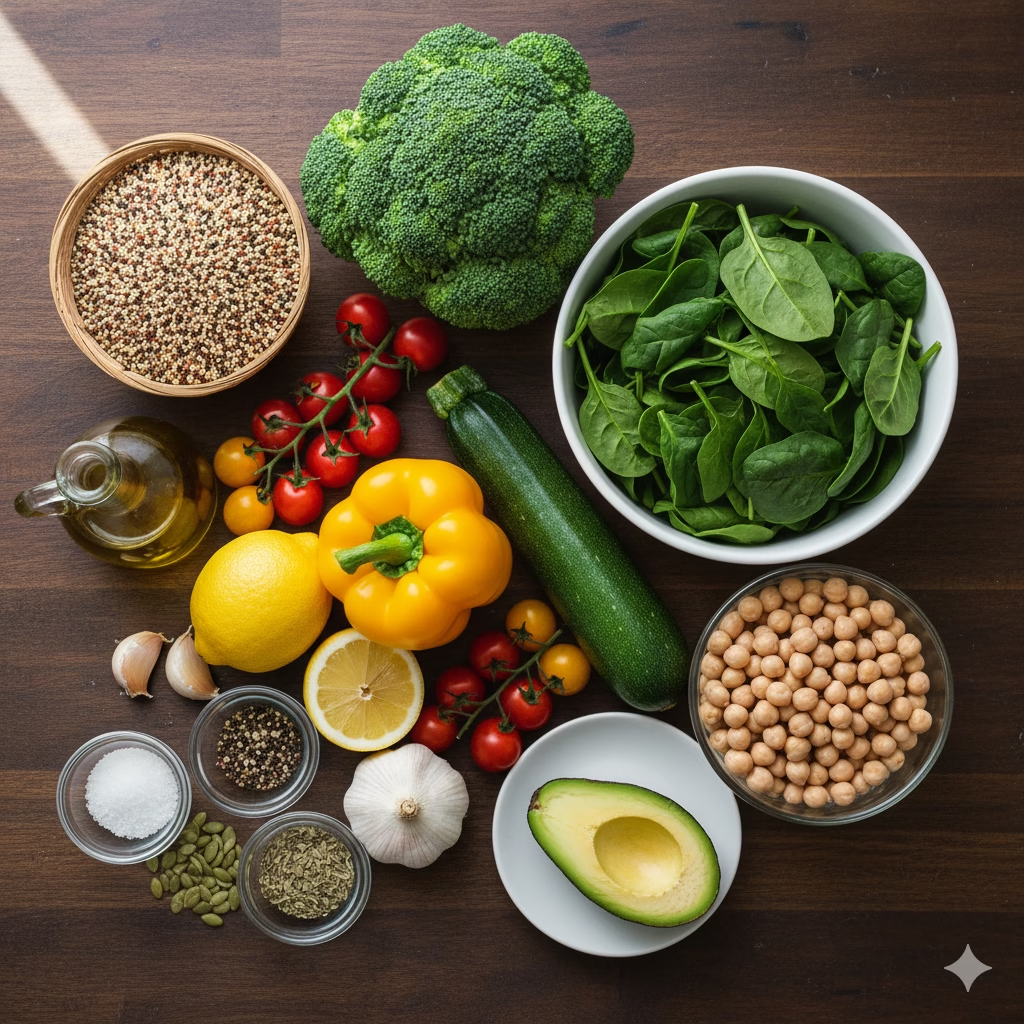
Follow these easy steps to make your delicious and healthy Green Power Bowl:
Cook the Quinoa: First, rinse the quinoa well under cool water. This helps get rid of any bitter taste. Put the clean quinoa and 2 cups of water or vegetable broth into a small pot. Bring it to a boil, then turn the heat down to low. Cover the pot and let it simmer for about 15 minutes, or until all the liquid is gone and the quinoa looks fluffy. Take it off the heat and let it sit with the lid on for 5 more minutes. Then, use a fork to fluff it up.
Get the Veggies Ready: While the quinoa cooks, wash and chop all your vegetables. Cut the broccoli into small, easy-to-eat pieces. Slice the bell pepper into thin strips. Slice or dice the zucchini into same-sized pieces so they cook evenly. Cut the cherry tomatoes in half.
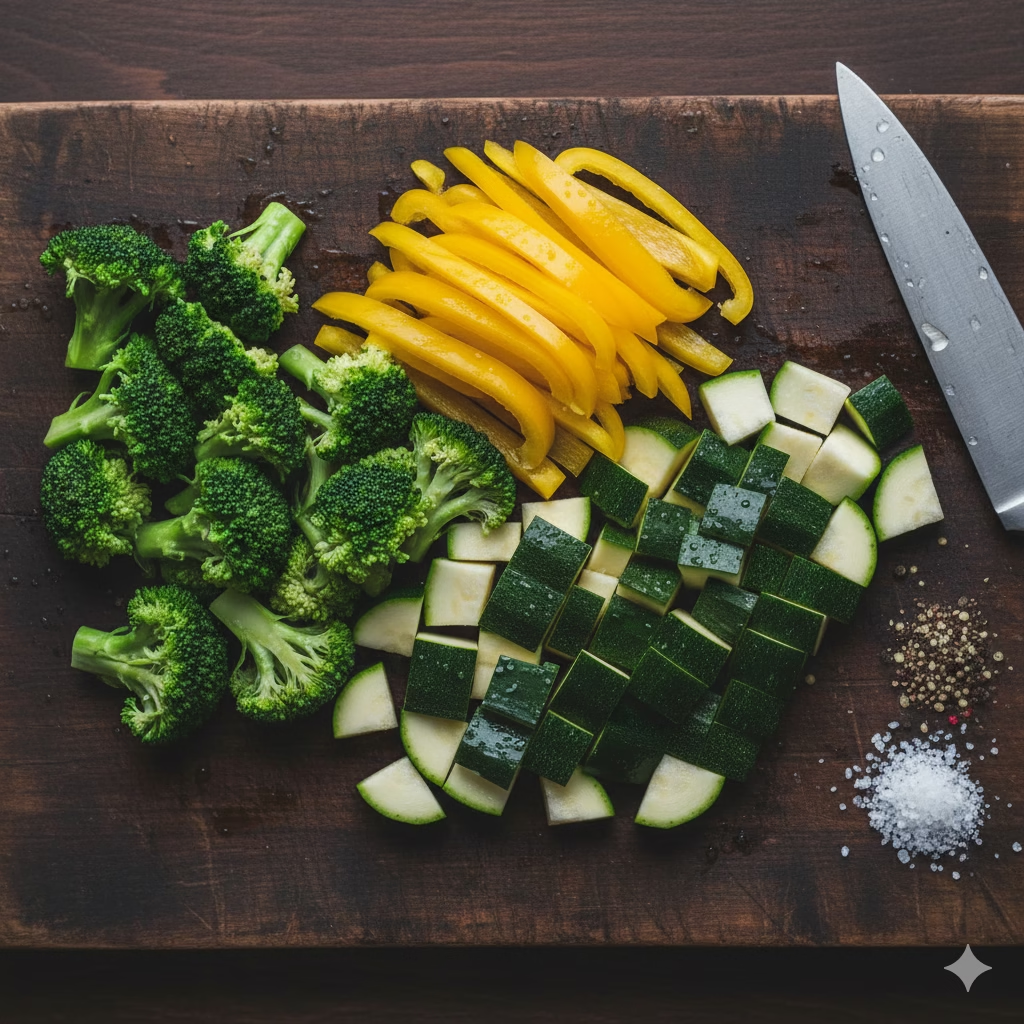
Cook the Vegetables (Pick Your Way):
Roasting in the Oven (Best for Flavor): Heat your oven to 400°F (200°C). In a big bowl, toss the broccoli, bell pepper, and zucchini with 1 tablespoon of olive oil, a little salt, and pepper. Spread them out in a single layer on a baking sheet. Roast for 15-20 minutes, or until they’re tender and a bit golden. Make sure not to crowd the sheet; if you need to, use a second one.
Sautéing on the Stove (Faster Way): Put 1 tablespoon of olive oil in a large frying pan over medium-high heat. Add the broccoli, bell pepper, and zucchini. Cook for 8-12 minutes, stirring a few times, until the veggies are tender but still a bit firm. Add the rinsed chickpeas to the pan for the last 5 minutes to heat them up.
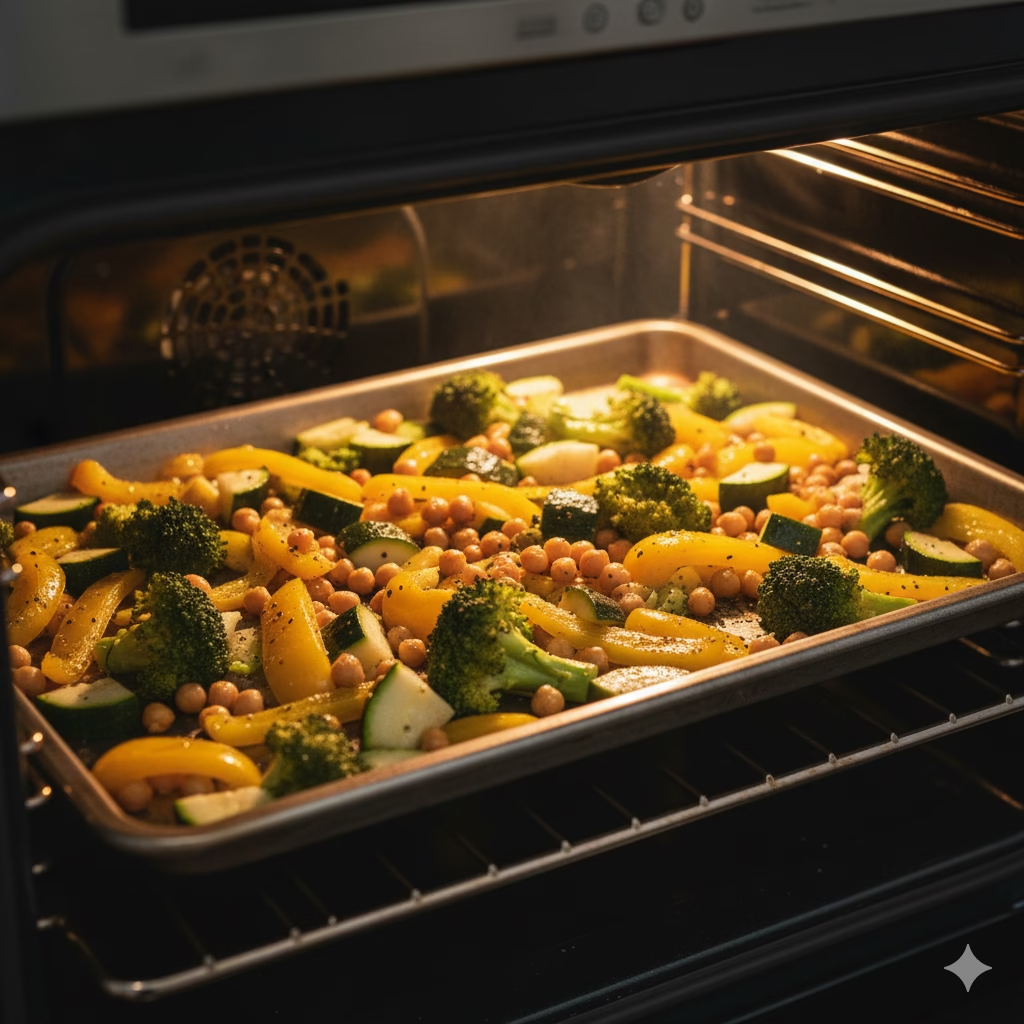
Heat the Chickpeas: If you’re roasting the veggies, you can add the rinsed chickpeas to the baking sheet for the last 10 minutes of cooking. If you’re sautéing, just add them to the pan with the veggies for the last 5 minutes. This warms them up and makes them a little crispy.
Mix the Lemon-Herb Dressing: In a small bowl, whisk together the 3 tablespoons of extra virgin olive oil, 2 tablespoons of fresh lemon juice, the chopped garlic, dried oregano, salt, and pepper. Keep whisking until it all looks well mixed. Taste it and add a bit more lemon or salt if you like.
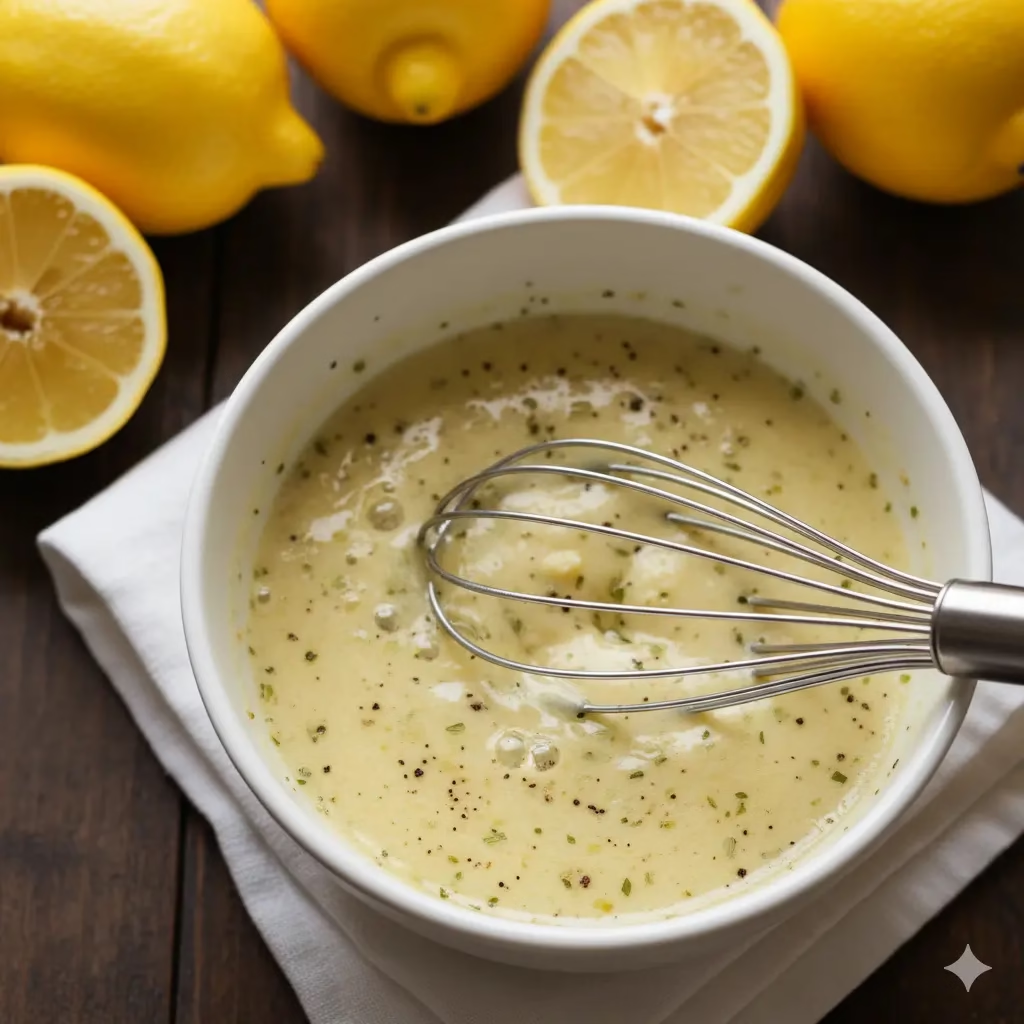
Build Your Power Bowls: Put the cooked quinoa evenly into your serving bowls. Add a good amount of the cooked vegetables and the warm chickpeas. Place the fresh spinach or kale on top of the quinoa and veggies. Sprinkle the cherry tomatoes over everything.
Add Dressing and Serve: Drizzle the lemon-herb dressing all over each bowl. If you’re using them, add toppings like sliced avocado, pumpkin seeds, or a little feta cheese. Serve right away and enjoy your amazing homemade Green Power Bowl!
Benefits of Building Your Healthy Grocery List
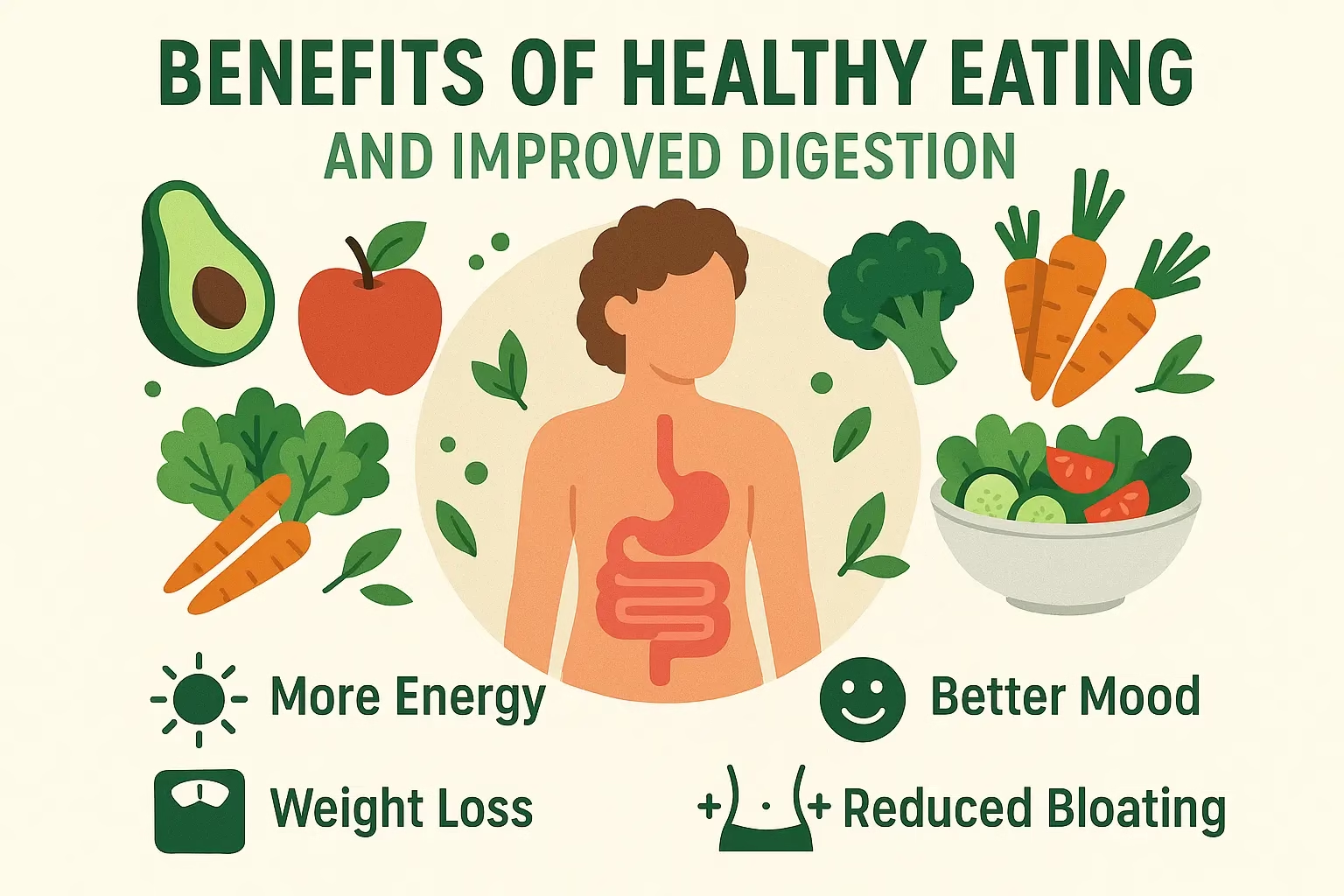
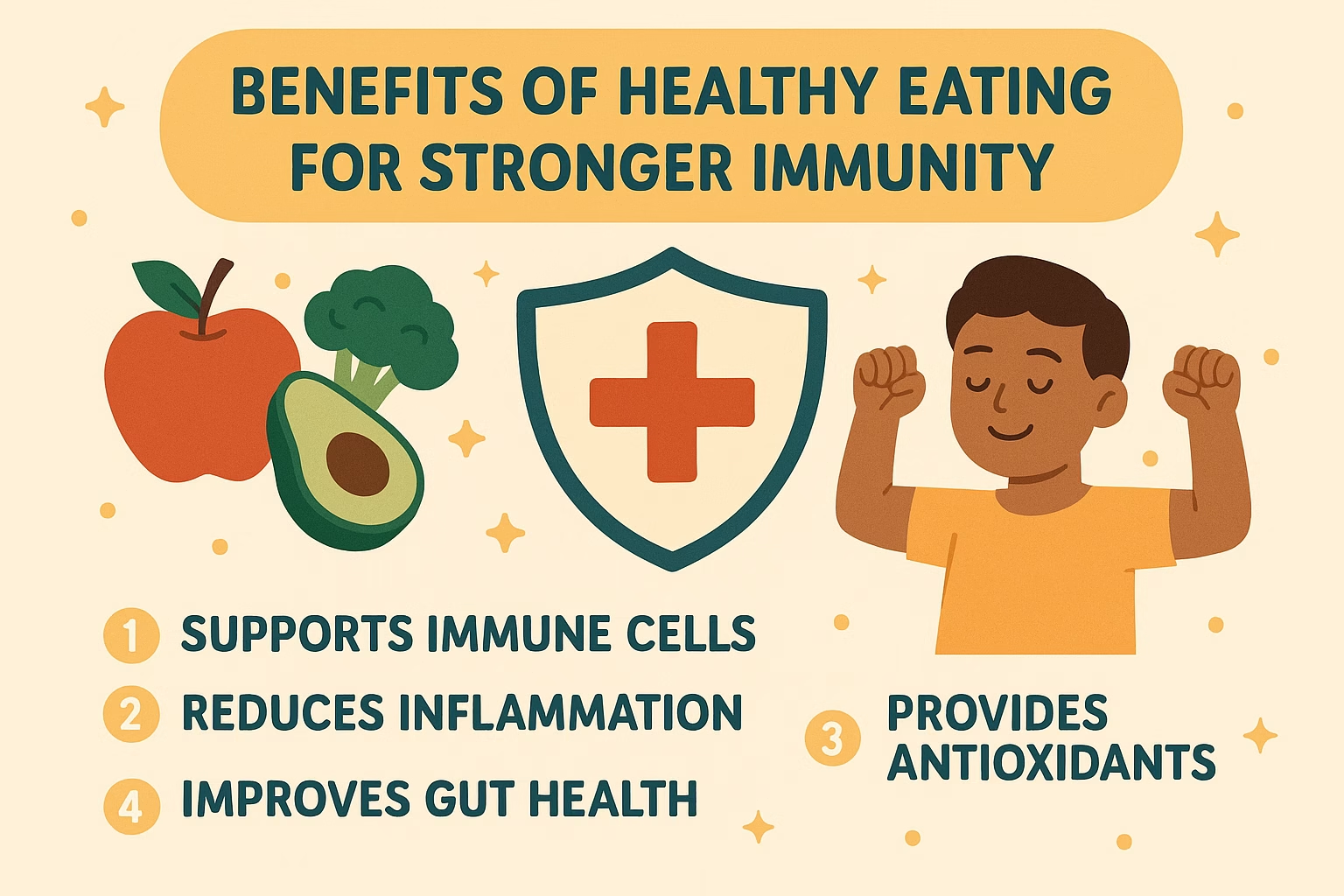
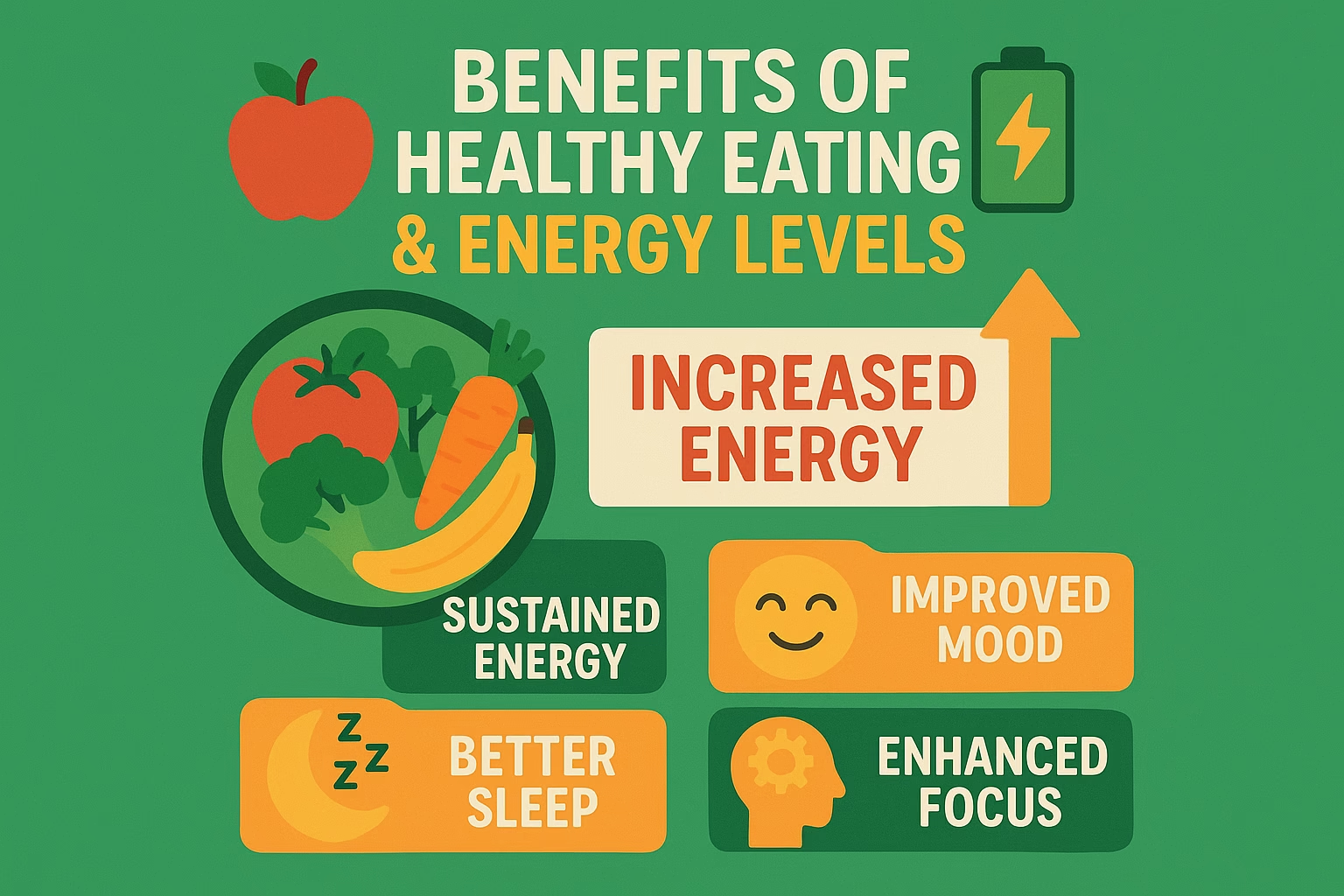
Having a plan for your grocery list is about more than just one meal. It’s about creating habits that help you stay healthy and feel good for a long time.
More Nutrients, More Energy
When you focus on whole, natural foods, you get more important vitamins, minerals, fiber, and antioxidants. This helps your body in many ways, from boosting your immune system to giving you more energy all day long.
Helps with Weight Control
A kitchen full of healthy foods makes it easier to make good meals and snacks. This means you won’t be as tempted by high-calorie junk foods. This can really help you manage your weight and keep your metabolism working well.
Better Digestion
The high fiber in fruits, veggies, and whole grains on a healthy grocery list helps your digestive system work smoothly. This can prevent problems and keep your gut healthy.
Gives You Lasting Energy
Eating nutrient-rich foods gives you a steady stream of energy. You won’t have the energy crashes that come from eating sugary snacks or white bread. You’ll feel more awake and focused all day.
Healthy Grocery List: Variations for Every Palate
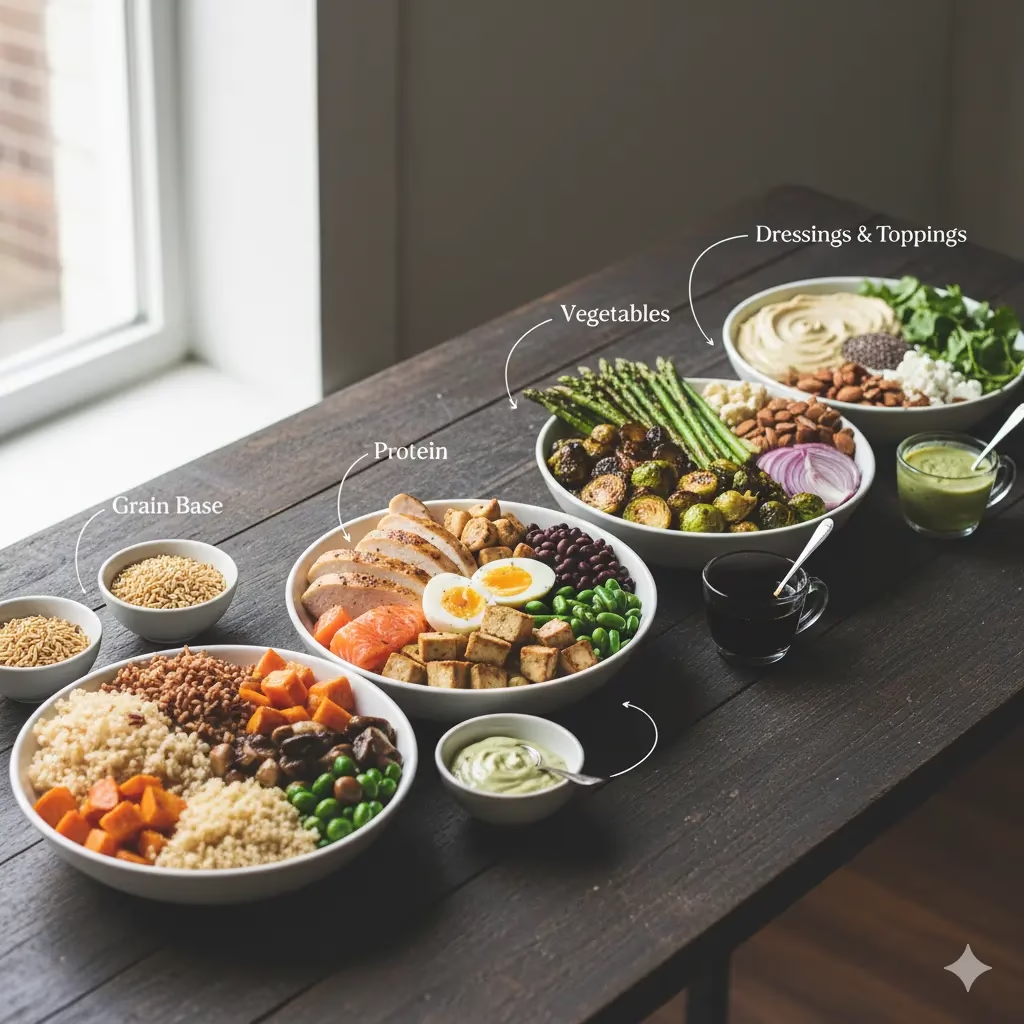
A well-planned healthy grocery list is super flexible. Our Green Power Bowl is just a start. Feel free to change it up to fit your tastes, your diet, or what you have available.
| Component | Variation Options |
| Grain Base | Brown rice, farro, whole wheat couscous, or even cubed sweet potato for a grain-free option. |
| Protein | Grilled chicken, baked salmon, hard-boiled eggs, tofu, tempeh, black beans, edamame, or lentils for different protein sources. |
| Vegetables | Asparagus, green beans, Brussels sprouts, mushrooms, or red onion. Pick veggies that are in season for the best flavor and nutrients. |
| Dressing | Try a tahini-lemon dressing, a balsamic vinaigrette, a creamy avocado-lime dressing, or just olive oil and apple cider vinegar. Play with fresh herbs like dill, parsley, or cilantro. |
| Toppings | Nuts (almonds, walnuts), seeds (chia, flax, hemp), different cheeses (like goat cheese or parmesan), fresh herbs, a spoonful of hummus, or hot sauce if you like spice. |
Final Thoughts on Your Healthy Grocery List
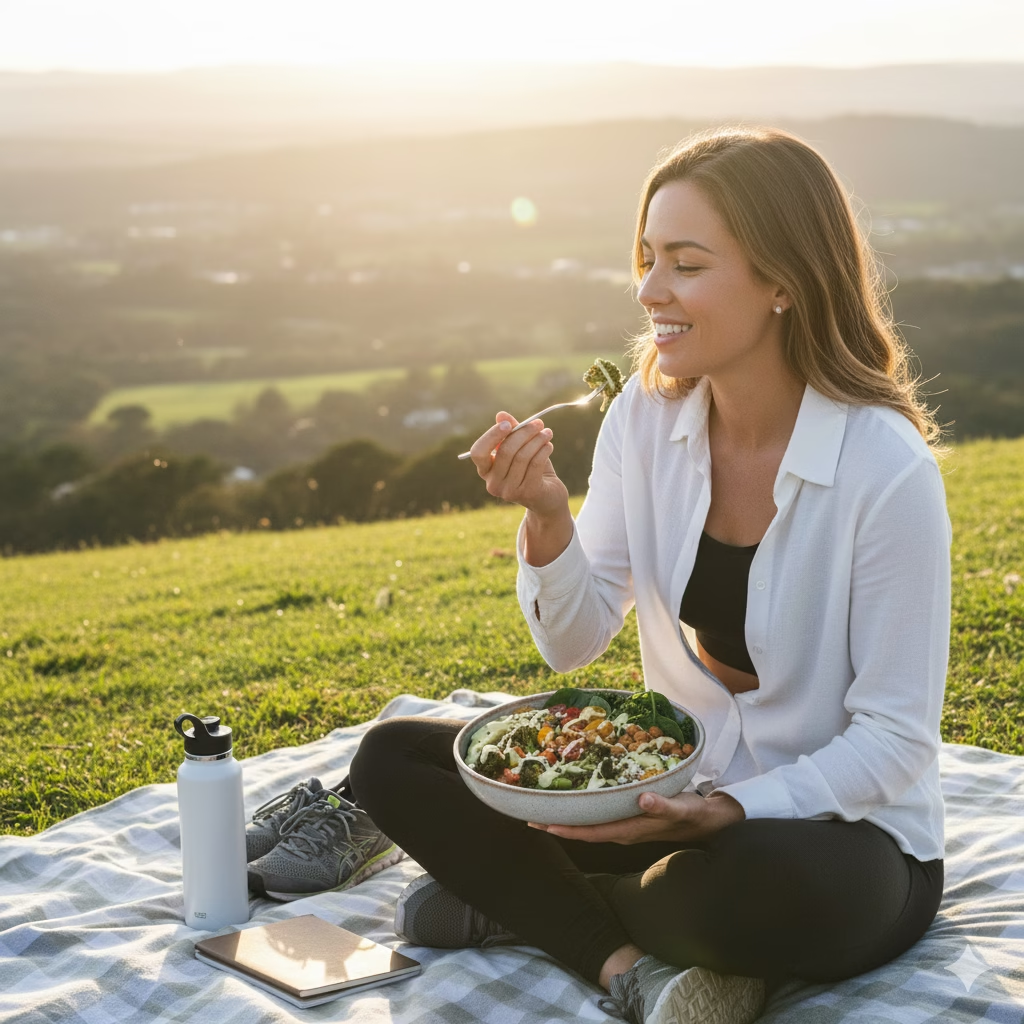
Starting your journey to healthier eating begins with a simple plan. A good healthy grocery list is your most important tool. It turns a chore like grocery shopping into a fun way to care for yourself. By buying whole foods and planning your meals, you’re not just buying food; you’re investing in your health and happiness.
Remember, eating healthy is a marathon, not a race. Don’t try to be perfect all at once. Start small, make healthy choices often, and be proud of every step you take. Use this guide as a base, try new foods, and find what truly makes your body feel good. What tasty, healthy meal will you make with your next healthy grocery list?
Frequently Asked Questions (FAQs)
Q: How often should I update my healthy grocery list?
A: It’s a good idea to update your healthy grocery list every week. This helps you match it to your meal plans for the week, use what’s in season, and stop you from buying things you don’t need. As you find new recipes or favorite foods, you can easily add them to your list.
Q: What are some tips for sticking to my healthy grocery list and avoiding impulse buys?
A: To stick to your list, try these tips:
- Eat Before You Shop: Shopping on an empty stomach makes it harder to say no to unhealthy snacks.
- Shop the Outer Aisles: Most stores keep fresh produce, dairy, and lean proteins around the edges. The middle aisles often have more processed foods.
- Use a List: A list on paper or an app keeps you focused and helps you check off items as you go.
- Avoid Distractions: If you can, shop when the store isn’t so busy, and focus only on your list.
References
- Harvard T.H. Chan – Healthy Eating Plate
- Mayo Clinic – Healthy cooking
- USDA – Eat Healthy on a Budget
Recent Posts
